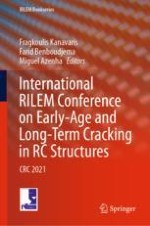
2021 | OriginalPaper | Buchkapitel
Age-Adjusted Effective Elastic Modulus of High-Performance Concrete at Early Age
verfasst von : Arosha Dabarera, Liang Li, Jiahang Li, Vishvendra Singh Jamwal, Qifan Yang, Vinh Dao
Erschienen in: International RILEM Conference on Early-Age and Long-Term Cracking in RC Structures
Aktivieren Sie unsere intelligente Suche, um passende Fachinhalte oder Patente zu finden.
Wählen Sie Textabschnitte aus um mit Künstlicher Intelligenz passenden Patente zu finden. powered by
Markieren Sie Textabschnitte, um KI-gestützt weitere passende Inhalte zu finden. powered by